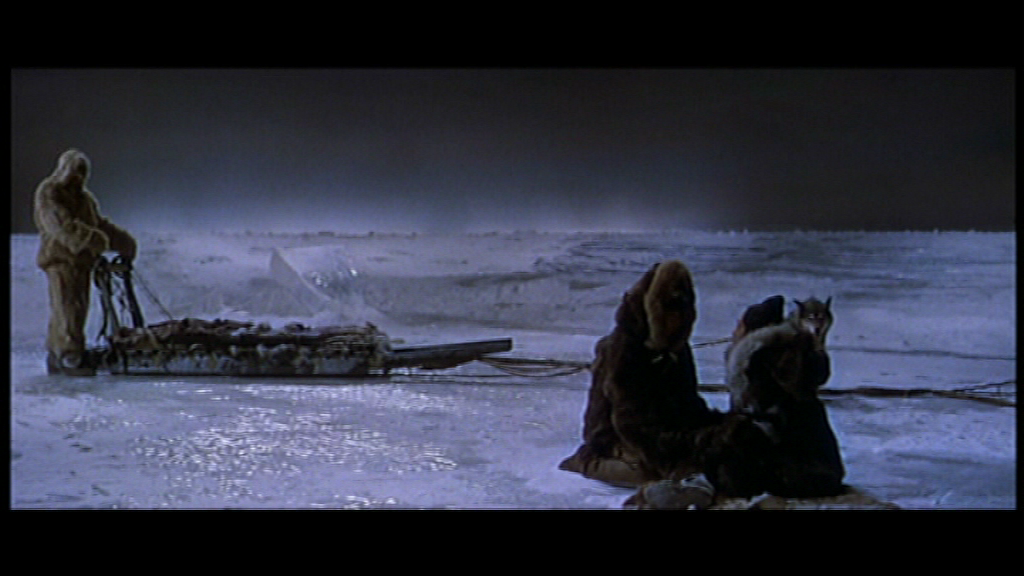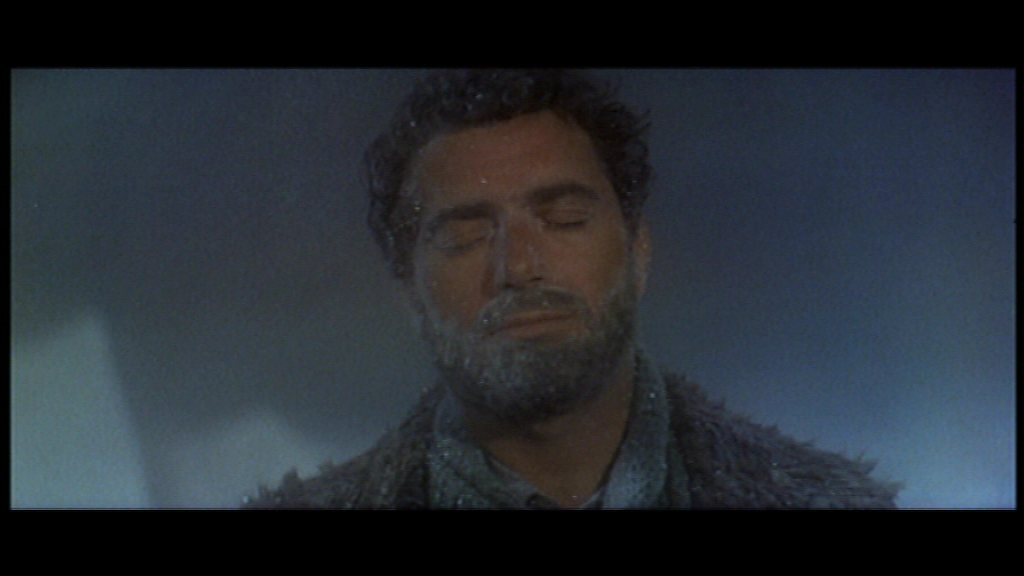|

Synopsis:
Eskimos Inuk (Anthony Quinn) and his wife Asiak (Yoko Tani) survive happily together in the Arctic, until the day they arrive at a trading post and Inuk accidentally kills a missionary (Marco Guglielmi). Eventually Inuk is found and arrested by two troopers (Carlo Giustini and Peter O’Toole) — but when Giustini falls into the ice and dies, Inuk must decide whether to kill his remaining captor or help keep him alive.
|
|
Genres, Themes, Actors, and Directors:
- Anthony Quinn Films
- Native Peoples
- Nicholas Ray Films
- Peter O’Toole Films
- Race Relations and Racism
- Survival
Review:
Inexplicably lauded by modern critics, this patronizing ethnographic drama (co-written and directed by Nicholas Ray) is an insufferable exercise in frustration. Accompanied by a grandiose Voice of God narration, the story purports to portray Eskimos in an authentic light, but instead simply holds them up to our “civilized” gaze as “savage innocents”: the mostly Japanese cast (generically olive-skinned Anthony Quinn is a notable exception) can’t seem to stop giggling; sex is depicted as a casual, all-day affair; and men resolve their differences by knocking their (apparently dense) heads against blocks of ice. Quinn himself is perhaps the most egregious character in the film: it’s impossible to take him seriously when he’s asked to recite such insipid lines as, “A woman is not a seal — or even a walrus!”
For every moment we’re allowed to admire the Eskimos’ estimable survival skills (especially in contrast with the ignorant troopers, who fatally refuse to follow Inuk’s guidance about riding over ice), we’re supposed to laugh at the silliness of their quaint customs. For instance, while it’s impressive that Asiak is able to give birth on her own (how this scene must have shocked audiences at the time!), it defies belief that she and Inuk don’t know babies are born without teeth (have they never seen babies nursing before?). The film partially redeems itself once Peter O’Toole’s (American-dubbed) trooper arrives in the story, and is given a detailed explanation of why it’s the ultimate insult to refuse to “laugh” with another man’s wife — but, once again, this cautious respect is undermined in the final scene, when O’Toole is posited as ultimately savvier than the naive Inuk can ever hope to be. Even the lovely Arctic cinematography can’t save this film from its own worst tendencies; I recommend renting Never Cry Wolf (1983) or the recent Inuktitut-language Fast Runner (2001) instead.
Redeeming Qualities and Moments:
- Gorgeous cinematography of Arctic landscapes

- The freaky hypothermia scene — a rare moment when Inuk’s wisdom is allowed to bear out

- The final half hour of the film, when O’Toole gradually begins to understand the ways of the Eskimo

Must See?
No. While it’s listed as a Cult Movie in the back of Peary’s book, this dated film is no longer must-see viewing.
Links:
|




One thought on “Savage Innocents, The (1960)”
Not a must.
I’m only glad I finally saw this because it was one of the few Nicholas Ray films I hadn’t seen.
~though, in a way, I still kind of wish I hadn’t seen it. Except for Ray himself, who was this movie intended for?! I’m sure it suited his purposes as yet-another ‘loner’ flick; a study of someone on the periphery of conventional society, marching to a different, somehow nobler drummer. Ray does his best to fashion the film as such.
Still, it’s kind of a crackpot pic; even though I can only imagine that Ray, a generally admirable writer/director, somehow had a sincere intent. I’m not much schooled in anthropology/ethnography but, though a detail here and there rings true about the Eskimos, a good deal of this ambitious effort rings silly (i.e., the dialogue, for starters).
FFs are probably just better off with ‘Nanook of the North’.